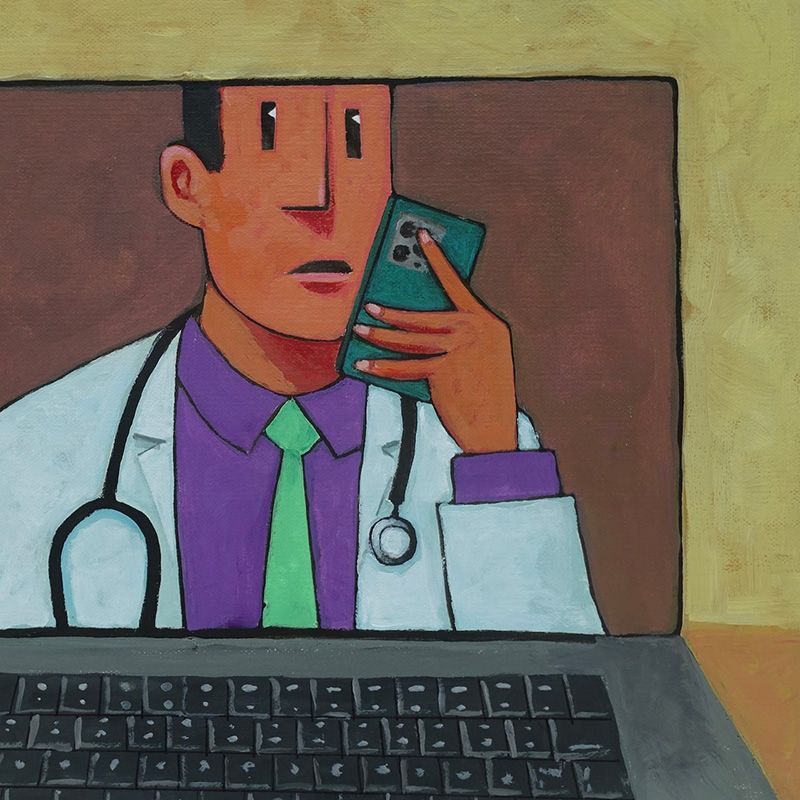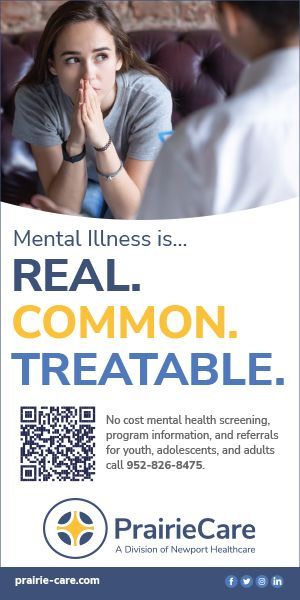here’s been a lot of interest recently in artificial intelligence (AI) and rightfully so. The technology has made rapid advancements in the last several years and is already being used to automate tasks and improve workflows. And its ability to use human language can be surprisingly good.
cover story one
Artificial Intelligence in Medicine
A look at where we are today
By Chesley Chen, MS, MBA
Generative AI describes algorithms like ChatGPT, and Google’s Bard can be used to create new content such as written copy, audio, code, images, simulations and videos. Using machine learning and large language models, AI can “learn” from data patterns in huge and complex data sets without human direction.
But there are also downsides, including the potential for AI to provide misinformation, potentially harming patients. Despite concerns in medicine and other industries that AI will eliminate jobs, it’s unlikely given the shortage of providers and the abundance of work to be done.
But let’s explore some ways physicians are using AI now — and some of the drawbacks — to see if it might benefit your practice.
It is crucial to emphasize that AI should support, not replace, professional medical judgment.
Ways physicians are using AI
More time for patients, less burnout: NIH research published in Health Affairs showed that physicians spend 51% of their time on record keeping and desk work, leaving only 49% of their day on face-to-face patient care. A survey by the AMA further reported that 70% of physicians felt that EHRs contributed to their burnout. Imagine a world where AI can help physicians and providers spend more time with patients to improve health outcomes and the quality of the patient experience. We provide specific use cases below.
Appointment notes: Spending time with patients is usually the most rewarding part of a doctor’s job. But when dealing with electronic health records, it can feel like you’re clicking through screens more than you’re caring for patients during appointments.
Some doctors are starting to look to AI to help with note taking. With patients’ consent, physicians are using apps to record appointments and take notes for them. It frees them up to be more attentive to patients and can save time after appointments as some systems can auto-populate EHR fields and codes.
Patient scheduling: Scheduling is time consuming for both medical staff and patients. Many doctors’ offices are already using AI to reduce this burden, including sending text and voice appointment reminders, which can reduce the chance of no-shows and cancellations.
Setting follow-up and ongoing appointments: Some AI tools can evaluate patients’ previous appointment history and medical needs to suggest times and dates they’d likely prefer for future appointments.
Appointment availability: Tools also can analyze providers’ schedules and upcoming availability for improved resource allocation.
Wait-time prediction: AI algorithms can predict wait times for appointments, allowing doctors to schedule more efficiently and provide patients with more accurate information to help set expectations about when they will be seen.
Patient paperwork: Beyond just taking notes, AI can help physicians with other patient paperwork. Electronic medical records can be a headache to fill out and code — but they’re also necessary for reimbursement. If a procedure isn’t coded correctly, it’s problematic for both your patients and staff. And with the new and still-evolving No Surprises Act requirements, disputes over treatment could escalate into a legal battle costing additional time and resources to resolve.
AI tools can help automatically code and document medical records, potentially saving time and reducing errors. These tools can analyze relevant information from medical notes, lab results, and imaging reports to make a judgment on what ICD codes apply.
Explaining complicated topics to patients and their caregivers: Medical jargon and complex scientific terminology can be a foreign language to patients and caregivers — and not very helpful in effective communication and many times frightening. One of the most useful improvements in AI is its ability to summarize complex technology and legal and medical terminology topics in plain language that’s easier for patients to understand.
You can ask a tool like ChatGPT how to explain a diagnosis to a patient in simpler terms. You can also ask the tool to offer treatment options and lifestyle recommendations, enabling patients to better understand their health and make informed decisions in collaboration with their health care providers.
AI can “learn” from data patterns in huge and complex data sets without human direction.
Summarizing complicated research for you: Sometimes it’s not just patients who need information that’s easier to understand, especially when you have a busy schedule! ChatGPT is skilled at scanning and processing large volumes of scientific literature. As an example, we recently asked ChatGPT to explain Chimeric Antigen Receptor T-cell (CAR-T) therapy for a general practitioner. It did a thorough job (and very quickly!). Here’s what it said:
CAR-T, or Chimeric Antigen Receptor T-cell therapy, is an innovative immunotherapy approach used to treat certain types of cancer, particularly blood cancers like leukemia and lymphoma. In this therapy, the patient’s own immune cells, specifically T-cells, are genetically modified to recognize and attack cancer cells. The process involves collecting T-cells from the patient’s blood, then genetically engineering them to express a special receptor called a chimeric antigen receptor (CAR). This CAR enables the T-cells to specifically target a protein found on the surface of cancer cells. Once the T-cells are modified, they are multiplied in the lab and infused back into the patient’s bloodstream. Once reintroduced, these CAR-T cells can bind to the targeted protein on cancer cells, leading to their destruction. CAR-T therapy has shown promising results, especially for patients who haven’t responded to other treatments. However, it can also cause severe side effects, such as cytokine release syndrome, which needs to be closely monitored and managed. For the general practitioner, it’s important to be aware of this therapy and its potential benefits and risks, as well as to refer patients to specialized centers when appropriate.
Diagnosis and treatment assistance: Think of AI as a way to narrow down an initial opinion. Through its ability to read voluminous data and spot patterns faster than human colleagues, it can winnow through all the less likely options. AI algorithms can analyze large amounts of medical data, including patient symptoms, medical history and test results, to help medical professionals make faster and potentially more accurate diagnoses. It can also help sort through treatment options better suited for a specific patient
Downsides of AI in medicine
While it’s human nature to seek out knowledge, it’s important to understand what AI can and cannot do in its current stage as well as some of its inherent limitations and quirks. AI models learn based on the information that they ingest, so it can be biased depending on those data sources. In addition, some people may be surprised to learn that AI models can also hallucinate and provide incorrect information, so any responses need to be verified.
Data privacy and security: Depending on the software type and license, AI tools may have access to or retain sensitive patient information, posing risks to data privacy and HIPAA compliance violations. Before adopting any free AI tools, verify proper security measures like encryption and that data is not retained or copied, to protect patient confidentiality.
Incorrect information: Depending on the model and the dates and source of data that it pulls from, an AI tool’s knowledge base can contain inaccuracies. This could potentially lead to patients’ receiving an incorrect diagnosis or incorrect advice. For a valid medical application, there needs to be a tested and verified source as well as clear understanding of the limitations for a practitioner to trust the accuracy and reliability of AI-generated content to prevent misinformation and potential harm.
AI replacing human judgment: Although AI can be a valuable tool in health care, there’s a risk patients or less experienced providers may rely too heavily on it. As a tool, it can complement human experience and knowledge. It is crucial to emphasize that AI should support, not replace, professional medical judgment.
Patient wariness: While some people are wary about AI, it’s going to continue to be a growing part of many industries, including health care. Be upfront with patients about how you’re using AI and emphasize the way it helps reduce more mundane tasks so you can spend more quality time with them.
With the significant growth and adoption of AI, it has the potential to ease the administrative burdens of running a practice and reducing time spent on the clerical aspects such as taking notes and updating patient records. Whether it will ever replace a human physician remains to be seen but that’s far into the future from its current abilities.
Chesley Chen, MS, MBA, is Principal, Life Sciences, CliftonLarsonAllen (CLA)
MORE STORIES IN THIS ISSUE
cover story one
Artificial Intelligence in Medicine: A look at where we are today
By Chesley Chen, MS, MBA
cover story two
Reimagining the Hospital Medical Library: Maintaining an under appreciated asset
By Hilton M. Hudson, MD, FACS




















